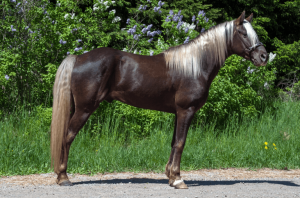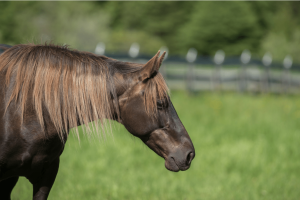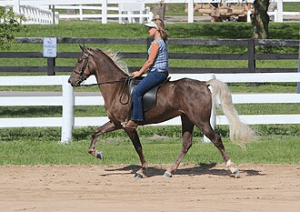Discovering the Rocky Mountain Horse Legacy.

The Rocky Mountain Horse, despite its misleading name, is a testament to the rich equestrian heritage of the Appalachian Mountains. Originating in Kentucky, USA, this breed is more a product of the Appalachian terrain than the Rocky Mountains. The narrative of the Rocky Mountain Horse unfolds in the late 19th century, echoing through the ages with tales of foundation stallions, such as the renowned Old Tobe, and the subsequent formation of the Rocky Mountain Horse Association in 1986.

In the heart of eastern Kentucky, a foundation stallion arrived from the western United States around 1890, laying the groundwork for what would become the Rocky Mountain Horse. This stallion, aptly named the “Rocky Mountain Horse,” possessed the distinctive chocolate coat, flaxen mane and tail, and the single-foot gait – characteristics that define the breed today. Old Tobe, a descendant of this foundation stallion, played a pivotal role in shaping the modern breed during the mid-20th century under the ownership of Sam Tuttle.
Despite the challenges posed by the Great Depression and World War II, Sam Tuttle remained dedicated to the breed. Old Tobe, with his enduring legacy, continued to sire trail horses and contribute to the breed’s resilience. The post-war era saw a decline in horse populations, but the Rocky Mountain Horse persevered, thanks to Tuttle’s commitment and the breed’s versatility.
In 1986, the establishment of the Rocky Horse Association marked a turning point, fostering the breed’s growth and garnering global recognition. The association’s stringent registration requirements, including DNA testing and physical inspections, ensure the breed’s purity and adherence to established standards. Today, with over 25,000 registered horses and a presence in 47 states and 11 countries, the Rocky Mountain Horse stands as a testament to the success of dedicated breeding efforts.

Rocky Mountain Horses exhibit a range of distinctive traits that contribute to their allure. Standing between 14 and 16 hands high, these horses showcase a preferred “chocolate” coat color with a flaxen mane and tail. The silver dapple gene, acting on a black base coat, creates this unique coloration. While minimal white markings are accepted, the breed’s physical characteristics may vary due to its diverse ancestry.
One of the most notable features of the Rocky Horse is its four-beat ambling gait known as the “single-foot.” Unlike the trot seen in many horse breeds, the single-foot gait offers an intermediate speed between a walk and a canter or gallop. This distinctive gait enhances rider comfort by minimizing movement and providing smoothness during traversal of various terrains.

With its commendable hardiness and affable nature, the Rocky Mountain Horse has earned a reputation as a versatile and people-friendly breed. However, the breed faces challenges, including a genetic ocular syndrome known as multiple congenital ocular anomalies (MCOA). Research suggests a connection between MCOA and the silver dapple gene present in the breed.
Efforts by enthusiasts and organizations, such as the American Livestock Breeds Conservancy, play a crucial role in the conservation of the Rocky Mountain Horse. While the breed enjoys popularity in various equestrian pursuits, its gait and disposition make it particularly sought after by elderly and disabled riders.
Originally developed for multi-purpose tasks on Appalachian farms, the Rocky has transitioned into a breed widely utilized for working cattle, endurance riding, and pleasure riding. Its adaptability and gentle nature make it an ideal companion for riders of all ages.
Each year, the International Rocky Mountain Horse Show at the Kentucky Horse Park stands as a celebration of the breed’s excellence and a testament to its enduring legacy.
The Rocky Mountain Horse, with its roots deeply embedded in the Appalachian Mountains, stands as a symbol of resilience and versatility.
Video:




